Keywords
Oral health, tooth brushing, eating habits, childhood
Introduction
Oral hygiene levels among Greek children and adolescents remain to date unsatisfactory and dental caries remain one of the most prevalent diseases in this population [1-3].
Untreated caries may lead to dental pain and in extention impact other aspects of daily life (i.e. sleep, school activity) and reduce the overall quality of life [4].
Oral diseases are proven to be largely preventable and the effect of health behaviors, such as tooth brushing frequency, eating patterns and visits to the dentist, on oral health outcomes has been repeatedly highlighted [5-7].
Tooth brushing is an effective component of self-care that may prevent oral diseases or improve oral condition and is one consistent component of the educational messages given to children, adolescents and adults in oral health promoting programs [6,8].
The frequency of tooth brushing has been linked with several demographic, socioeconomic and behavioral variables therefore it is essential to derive such information regarding the target population into account during the planning phase of an oral health intervention program [6,9].
Eating habits are also associated with oral diseases, in particular with dental decay [5,10,11].
Early childhood eating patterns have also been linked with dental decay in adolescence, with childhood obesity, but also with other chronic diseases in adult life, such as diabetes or heart disease [5,12,13].
Due to this recognition, oral health promotion programs in primary schoolchildren are of paramount importance since they may not only contribute to the prevention of oral diseases, but also to other health conditions [14].
Regular dental visits, together with good daily oral self-care, are benefitial for children's oral health and are considered an important part of an intervention program aiming to prevent and control dental disease [15].
Early diagnosis and treatment of disease is the most important benefit, but the one of the most common reason for making a visit to the dentist is the existance of caries and its' complications [14].
It has been suggested, that oral health intervention programs that provide dental care in a school-based facility may increase the probability that students, with the support of the specialists, place their oral health in a higher value and lose their fear of dental treatment and as a result, make more often dental visits [15].
Focusing on primary school children resident in Athens, Greece, this study aimed to measure the prevalence of the most important health behaviors relating to oral diseases' namely tooth brushing, eating habits and visits to the dentist. It should be noted that the findings of the present study serve as a core stone for the planning of an oral health promotion program that will be implemented in this population.
Methodology
The study is part of a larger cross-sectional study regarding the general health of primary students and part of the thesis of one writer in the Health Visiting Department (HVD) of Technological Educational Institute of Athens. In 5 years time (2002-2009) primary school students of 24 primary schools in Athens were interviewed by trained students from the (HVD). Our sample consisted of 2.365 students, out of which 49 % were boys, aged 6 to 12 years. Each interview lasted approximately 30 minutes, took place in the school setting and an informed consent signed by the parent/caregiver was a prerequisite for participation in the study. For the interviews a structured questionnaire of 32 closed and open-ended questions was used, but for the purpose of the present study only 3 dimensions were used. More specific:
a) Tooth brushing frequency (2 items). The first question measured how often do the students brush their teeth in general ( 0= never, 1= rarely, 2= often, 3= everyday) and how often do they brush them in a daily basis (0= once, 1= twice, 2= three times, 3= four times, 4= five times).
b) Eating habits (1 item) were measured by asking how many snacks do students have daily (0= none, 1= one snack, 2= two snacks, 3= more than three snacks).
c) Visits to the dentist (2 items). One question measured the reason of their last visit to the dentist (0= toothdecay, 1= orthodontics) and the second question measured the time of the last visit to the dentist (0= 1 month ago, 1= 6 months ago, 2= 1 year ago, 3= 2 years ago, 4= never, 5= don't remember).
Descriptive statistics and frequencies using the SPSS 16v were conducted so as to analyse the data.
Results
All participants were students from all six classes of primary schools; 19.48% were first class students, 18.08% second class, 17.78% third class, 16.72% fourth class, 15.33% fifth class and 12.61% sixth class (Figure 1).
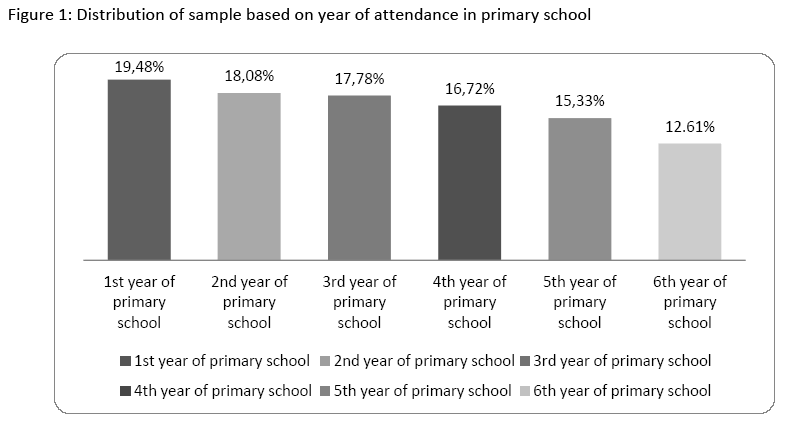
Figure 1: Distribution of sample based on year of attendance in primary school
The majority of all students (71.70%) reported that generally they brush their teeth everyday, 17.23% often and only 10.09% rarely or never (0.98%) (Figure 2). From those who reported brushing their teeth every day 42.32% did it once, 23.32% twice, 13.23% three times, 0.56% four times, and 0, 57% five times (Figure 3).
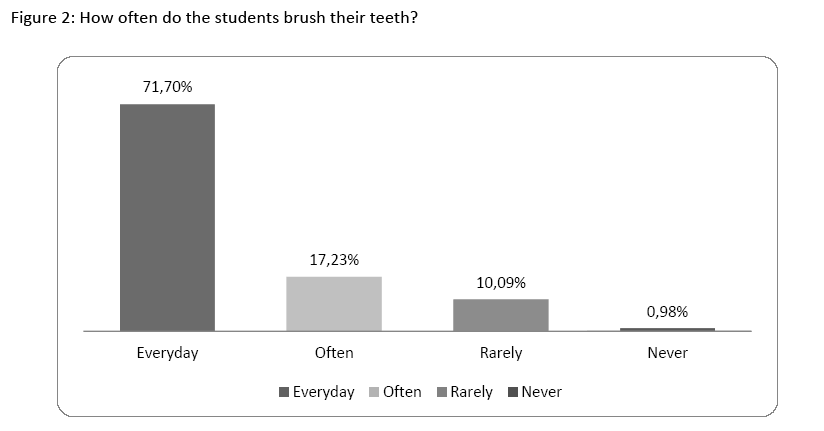
Figure 2: How often do the students brush their teeth?

Figure 3: How many times do students brush their teeth daily?
Evaluating the eating habits it seems that most students received a number of snacks on a daily basis: 2.49% did not receive any snack, 43.74% received one (brunch), 41.54% received two (brunch, afternoon snack), 8.13% received three (brunch, afternoon snack and at bedtime), 2.31% received four, 1.19% five and 0.60% from six to twelve snacks (Figure 4).
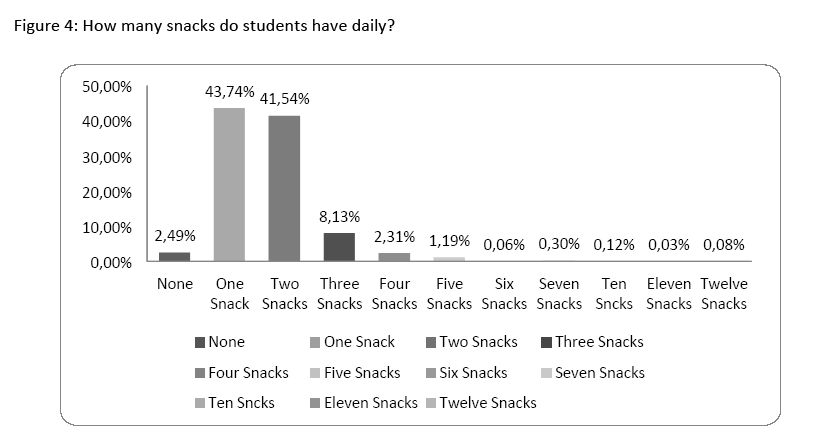
Figure 4: How many snacks do students have daily?
The main reason for visiting the dentist for 53,79% of the students was the existence of caries, and the remaining 46.21% went due to an orthodontic problem (Figure 5). Time of last visit to the dentist regardless the reason was for 20.06% a month ago, 15.36% 6 months ago, 12.69% a year ago, 4.79% two years ago, 11.85% never and 35.20% could not remember when the last visit was (Figure 6).
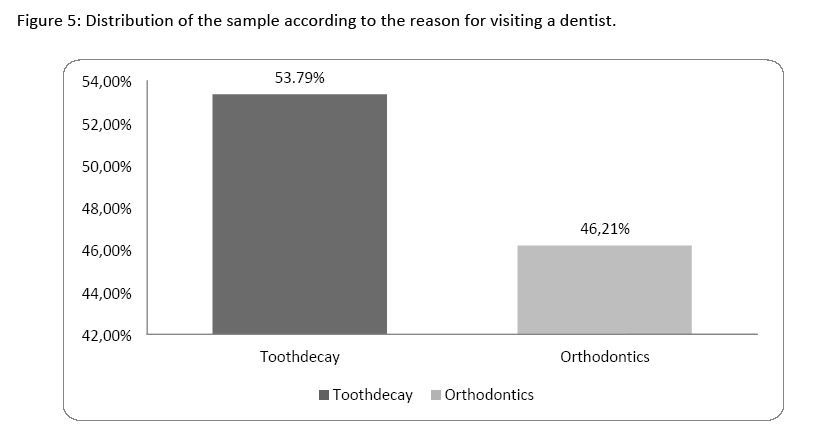
Figure 5: Distribution of the sample according to the reason for visiting a dentist.
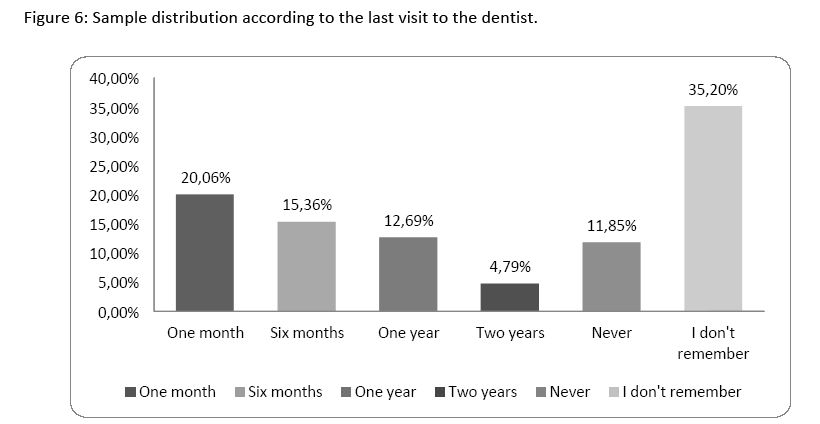
Figure 6: Sample distribution according to the last visit to the dentist.
Discussion
The present study was an effort to explore the health behaviors related to oral health, namely tooth brushing frequency, eating habits and visits to the dentist, of primary school students so as to plan a future health promotion program aiming in the improvement of their oral hygiene and the above mentioned health behaviors. Although the majority of the students reported that they brush their teeth daily (71.70%) only 13.23% brush them three times per day which is the suggested frequency [18]. Most of the students eat one (43.74%) or two snacks (41.54%) per day when it is recommended that snacks per day are acceptable [19]. Visiting a dentist due to carries is the most usual reason (46.21%) together with orthodontic problems. The majority of the students (35.20%) did not remember when was their last visit and 35.42% reported to have visited their dentist during the last 3 months. Our findings highlight the necessity of a structured oral health promotion program for the specific population.
The unsatisfactory oral hygiene levels of Greek students is not surprising since one of the most recent studies also conducted in our country revealed similar findings [1,2].
It seems that not only the students, but also their parents who strongly influence their childrens' behaviors do not fully realize the importance of good oral self-care [18,19]. Oral health promotion programs, so as to be more effective, should involve parents and also teachers in their target groups [15].
Visits at the dentist mainly due to dental diseases is not a surprizing finding. Of course, parents are responsible for taking their child to the dentist for their regular control and prevention practices. Therefore, oral health programs should definately involve parents in their target groups so as not only to inform them about the nessecity of dental visits, but also to teach them how brushing techniques should be performed and motivate them to adopt healthier oral hygiene related behaviors.
Limitations of the study
The complete questionnaire used was well structured, but not tested for its' validity and reliability. Since the purpose of our study was to record the specific oral health related behaviors so as to plan an intervention for this population we decided not to investigate further at this time anything else not related to our topic. In addition, more detailed information regarding eating habits, the brushing practices or fear for visiting the dentist would be useful. These information will be collected when the oral health promotion program will be implemented and will be used as a base for discussion and skills training. Further more, we did not investigated the correlations or causalities between our variables because we believed such an analysis would not add to the literature since this kind of research has been repeatedly reported and findings around the world agree.
Conclusions
The oral hygiene levels of Greek students remain unsatisfactory and the implementation of oral health education programs is a necessity. School is by definition a perfect educational setting and oral health education, as well as the teaching of other health behaviors, should be in teachers' agendas. Despite the limitations of the study, we do believe that was a good first step for the planning of an oral health promotion program. Hopefully, by the time that our program will be completed, the students will realize the importance of good oral health, will value their oral hygiene practices more and will adopt a healthier lifestyle in whole.
2620
References
- Vadiakas G, Oulis CJ, Tsinidou K, Mamai-Homata E, Polychronopoulou A. Oral hygiene and periodontal status of 12 and 15-year-old Greek adolescents. A national pathfinder survey. Eur Arch Paedriatr Dent 2012; 13(1):11-20.
- Vadiakas G, Oulis CJ, Tsinidou K, Mamai-Homata E, Polychronopoulou A. Socio-behavioural factors influencing oral health of 12 and 15 year old Greek adolescents. A national pathfinder survey. Eur Arch Paedriatr Dent 2011; 12 (3):139-45.
- Trichopoulos D, K. B. Preventive Medicine and Public Health. Eds Zita, Athens, 2000.
- Mashoto KO, Astrom AN, David J, Masalu JR.. Dental pain, oral impacts and perceived need for dental treatment in Tanzanian school students: a cross-sectional study. Health Qual Life Outcomes 2009,7:73.
- Arrow P, Raheb J, Miller M. Brief oral health promotion intervention among parents of young children to reduce early childhood dental decay. BMC Public Health 2013; 13: 245.
- Casanova-Rosado JF, Vallejos-Sánchez AA, Minaya-Sánchez M, Medina-Solís CE, De La Rosa-Santillana R, Márquez-Corona Mde L, et al. Frequency of Tooth Brushing and Associated Factors in Mexican Schoolchildren Six to Nine Years of Age. West Indian Medica 2013; 62(1): 68-72.
- Folayan MO, Khami MR, Folaranmi N, Popoola BO, Sofola OO, Ligali TO, et al. Determinants of preventive oral health behaviour among senior dental students in Nigeria. BMC Oral Health 2013;13:28.
- Vallejos-Sánchez AA, Medina-Solis CE, Maupomé G, Casanova Rosado JF, Minaya-Sánchez M, Villalobos-Rodelo JJ et al. Socio-behavioral factors influencing tooth brushing frequency in schoolchildren. J Am Dent Assoc 2008; 139: 743-9.
- Dawani N, Nisar N, Khan N, Syed N, Tanweer N. Prevalence and factors related to dental caries among pre-school children of Saddar town, Karachi, Pakistan: a cross-sectional study. BMC Oral Health 2012;12:59.
- Mobley C, Marshall TA, Milgrom P, Coldwell SE The contribution of dietary factors to dental caries and disparities in caries. Acad Pediatr 2009;9(6):410-4.
- Moynihan P, Petersen PE. Diet, nutrition and the prevention of dental diseases. Public Health Nutrition 2004;7(1A): 201–226.
- Sheiham A, Watt R. The Common Risk Factor Approach: a rational basis for promoting oral health. Community Dent Oral Epidemiol 2000; 28:399–406.
- Wu T-C, Chen P-H: Health consequences of nutrition in childhood and early infancy. Pediatric Neonatology 2009, 50:135–142.Mileva SP, Kondeva VK. Age at and reasons for the first dental visit. Folia Medica, 2010; 52(4): 56-61.
- Bentley J.M, Cormier P, Oler J. The Rural Dental Health Program: The Effect of a School-Based, Dental Health Education Program on Children's Utilization of Dental Services. Am J Public Health 1983; 73:500-505.
- Petersen PE, Kjøller M, Christensen LB, Krustrup U.Changing dentate status of adults, use of dental health services, and achievement of national dental health goals in Denmark by the year 2000. J Public Health Dent 2004;64(3):127-35.
- Petersen PE.Sociobehavioural risk factors in dental caries: International perspectives. Community Dent Oral Epidemiol 2005;33(4):274-9.
- World Health Organisation. Oral Health Surveys. Basic Methods. 3rd edition, Geneva, 1987.











